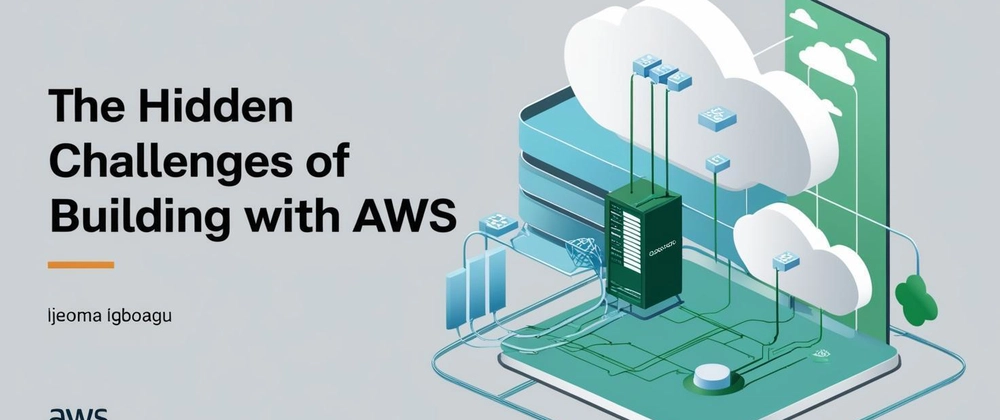Introduction: AWS Isn’t as Easy as It Looks
AWS is one of the top cloud platforms in the world. As of March 2025, AWS (Amazon Web Services) holds approximately 31% of the global cloud infrastructure market share. It supports everything from startups to large enterprise apps. Building and deploying an application on AWS isn’t as easy as it seems.
When I first started using AWS, I expected a seamless cloud experience. I faced confusing services, surprise costs, and a tough learning curve. This made me question my decision to move from being a software developer to a DevOps engineer.
In this article, I will discuss the biggest hidden challenges of AWS. Here’s what to think about before using it for your next project.
What Are These Hidden Challenges?
1. Overwhelming Number of Services
When I first started with AWS, I thought: “Okay, I just need to deploy my app.” Simple, right? Nope. AWS has over 200 services. Do I use EC2? Lambda? Fargate? Lightsail? Elastic Beanstalk? The options felt endless. I felt confused.
I remember spending hours reading AWS docs and still feeling confused. It felt like AWS designed itself for people who already had a certification in AWS. I settled on EC2, but later realized that Lambda might have been a better choice. Lesson learned: AWS makes you think hard about every choice before writing any code.
💡My Take: If you're starting out, AWS Free Tier is good. But for smaller projects, Vercel or Firebase can save you a lot of trouble.
2. Surprise Billing and Hidden Costs
One of my biggest AWS mistakes? Assuming the Free Tier meant "free for all resource." Spoiler: It is not for all AWS resources. Don't assume like me!😊
I launched a little project and then forgot about it for several weeks. The next thing I knew, I received a bill for data transfer fees. AWS charges for things you might not expect. This includes data transfer between services.
Another time, I used an S3 bucket, assuming it was low-cost storage. What I didn’t realize was that AWS charges not just for storage but also for API requests, retrieval speeds, and even for simply keeping objects in the bucket. Worse, I later discovered I was being billed for a storage service that AWS had automatically created while I was running another service—without me even knowing.
💡 My Take: AWS pricing can feel tricky. If you don’t keep an eye on costs, you might end up with surprise bills. If you’re not careful.
That's why I made this short YouTube video to help you recognize when a service is still running.
An engineer once said, "If you can't sleep, check your AWS—you might have left a service running."
3. AWS has a steep learning curve (even for experienced developers).
AWS isn’t beginner-friendly; newcomers to cloud begin with small projects. Even skilled developers find IAM policies, security rules, and network settings tricky.
I remember deploying a Lambda function. I expected it to work without issues. Instead, I got hit with:
❌ Execution role is missing permissions.
❌ Invalid API Gateway integration
❌ Service created with sns not working
❌ Iam policies not configured properly
Sometimes, it feels like AWS was designed for certified cloud architects, not for everyday developers.
Solution:
Explore AWS’s official tutorials and Skill Builder courses to navigate the complexities.
Automate deployments with Terraform to minimize human errors (especially the ones caused by sleep 😴).
When things get too overwhelming, sometimes the best fix is deleting the entire environment, taking a break, and starting fresh.
If you’re looking for an easier way to deploy, check out serverless platforms like Firebase or Vercel. Check out this article on different deployment methods: How to Deploy Your Websites and Apps – User-Friendly Deployment Strategies
💡My Take: If you’re not ready to spend hours debugging AWS configurations, you might want to consider other cloud options, such as DigitalOcean or Gitlab for CI/CD.
4. AI and Machine Learning on AWS are more accessible
AWS is investing a lot in AI and machine learning. This makes services like Bedrock, SageMaker, and Lambda AI easier for beginners to use.
The good news? You don’t need a PhD in AI to use AWS AI tools anymore.
The bad news? These services remain costly, not for free tier and require extensive knowledge to achieve effective scaling.
💡My Take: AWS AI services are improving, but costs and complexity remain challenges.
5. AWS Vendor Lock-in Is Worse Than Ever
Once you build on AWS, migrating to another cloud provider is even harder in 2025.
AWS services are more integrated and dependent on one another.
More companies are adopting multi-cloud strategies to avoid locking themselves into AWS.
AWS offers discounts for long-term commitments—but that also makes it harder to leave.
💡My Take: AWS is still great if you never plan to leave—but switching cloud providers is harder than ever.
Conclusion
AWS is powerful, but not for everyone. It offers scalability, flexibility, and enterprise solutions. However, it also has hidden complexities, surprise costs, and a steep learning curve.
If your project is small, AWS might not be the right choice. Also, if you want your deployment to last a long time, consider other options. Platforms such as Firebase can help with authentication and storage. Vercel and Netlify can help you deploy faster and with fewer issues.
The main takeaway? AWS is not as simple as it appears—but if you master it, you can speed up your cloud and DevOps journey.
If you found this article helpful, share it with others who may find it interesting.
Stay updated with my projects by following me on Twitter, LinkedIn, and GitHub.
Resources & Further Reading
Thank you for reading.




Top comments (2)
Very informative!
Weldone Ijay!
Thank you